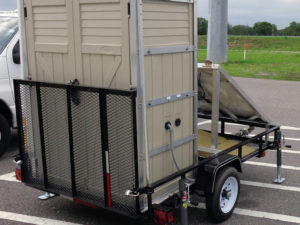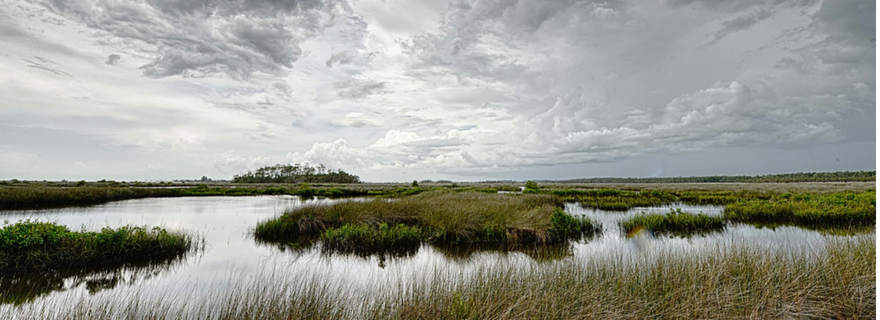 The winners of Tampa Bay Regional Planning Council’s Future of the Region awards, representing the partnerships and innovations that have made Tampa Bay one of the most-improved estuaries in the world, promise an even brighter future for the region.
The winners of Tampa Bay Regional Planning Council’s Future of the Region awards, representing the partnerships and innovations that have made Tampa Bay one of the most-improved estuaries in the world, promise an even brighter future for the region.
Three environmental awards recognize steadfast efforts to protect our water resources using the latest technologies and best management practices including:
- “Improving Compensatory Mitigation,” an in-depth report on the wetlands the region that have been built over since the 1950s – plus the turn-around in losses since 1999 — with suggestions for the future.
- Pasco County’s new “Neptune” project, which monitors water quality data from the moment it leaves the treatment plant until it arrives at a home, neighborhood or development.
- A formal designation of “unimpaired waters” in Tampa Bay, accomplished as the Tampa Bay Estuary Program’s Nitrogen Management Consortium completed more than 470 projects removing 529 tons of nitrogen from the bay since 1992. After making national news for years of uncontrolled pollution Tampa Bay continues to be recognized as one of the few urban estuaries in the world where water quality is improving.
Making Mitigation Work
 Even as researchers continue to document the importance of wetlands in urban ecosystems, they’re being built over as the region’s population continues to grow. The good news is that mitigation — replacing or restoring wetlands to make up for what is being destroyed – seems to be working in Hillsborough County.
Even as researchers continue to document the importance of wetlands in urban ecosystems, they’re being built over as the region’s population continues to grow. The good news is that mitigation — replacing or restoring wetlands to make up for what is being destroyed – seems to be working in Hillsborough County.
A study recently completed for the Environmental Protection Commission of Hillsborough County shows that local wetland mitigation projects have been bucking the national odds. “Mitigation alone isn’t enough to offset all of the human damage, but wetland acreage in Hillsborough County actually has been increasing since 1999,” said Aaron Brown, now a scientist working with the Southwest Florida Water Management District who completed the report as part of his PhD dissertation at the University of South Florida for the Environmental Protection Commission of Hillsborough County. “We’re not sure whether it’s a trend or a turn-around though.”
And there’s still a long way to go – the same report indicates that overall wetlands loss since the 1950s is about 30% of the total 99,729 acres remaining in 2011.
Neptune Analyzes Water
Neptune, a solar-powered, self-contained water analysis unit that continuously and remotely analyzes water for chlorine and pH levels, as well as water pressure, is helping to provide high-quality drinking water using an efficient flushing program to ensure quality, taste, clarity and color with real-time data.
 “Neptune is a game changer,” said Rob Marin, utilities operations and maintenance director.
“Neptune is a game changer,” said Rob Marin, utilities operations and maintenance director.
“This innovative unit has multiple capabilities, including serving as a tactical decision aid for improving flushing requirements, while maintaining satisfactory chlorine residuals.”
Instead of sending employees out to collect water samples three to four times a day, Neptune allows staff to examine samples collected every minute from various locations – saving time, money and resources and adjusting how water is treated by area.
Nitrogen Management Consortium Turns Around Water Quality
 Once so polluted that 60 Minutes described the bay as “dead,” Tampa Bay is now one of the few urban water bodies the Florida Department of Environmental Protection no longer includes on its list of impaired waters. Previously Tampa Bay was assessed as impaired by FDEP but the Tampa Bay Estuary Program’s Nitrogen Management Consortium voluntarily developed a “reasonable assurance” plan that did not require regulatory review.
Once so polluted that 60 Minutes described the bay as “dead,” Tampa Bay is now one of the few urban water bodies the Florida Department of Environmental Protection no longer includes on its list of impaired waters. Previously Tampa Bay was assessed as impaired by FDEP but the Tampa Bay Estuary Program’s Nitrogen Management Consortium voluntarily developed a “reasonable assurance” plan that did not require regulatory review.
The Tampa Bay Regional Planning Council recognized the Nitrogen Management Consortium – a unique group of governments, industry and landowners – for the accomplishment. As part of the Tampa Bay Estuary Program, the group voluntarily chose to create nitrogen-control projects that helped turn ambitious goals for seagrass recovery into reality–a regional goal established some 20 years earlier.
“The challenge now is maintaining that success – holding the line on nitrogen – as the region continues to grow,” said Ed Sherwood, director of the Tampa Bay Estuary Program. “Partners have invested in necessary upgrades and projects – now we’re going to have to be more innovative and forward-thinking as more people move to the region and the watershed continues to urbanize.”
Other Future of the Region award winners include:
This year’s winner of The One Bay McIntosh Award is Connected City, America’s first smart gigabit community built from the ground up in a public/private partnership between Pasco County, Metro Development Group, Heidt Design, Lincks & Associates/ and Tew & Associates.
In the built environment category, winners included:
- Fire Station # 43 reconstruction in Belleair Bluffs built as a partnership between the cities of Belleair Bluffs and Largo, and Pinellas County.
- The restoration of downtown Bradenton Historic District for the restoration of the Hampton Inn and Suites.
- The Courtney Campbell Trail, a 9.1-mile multi-modal trail connecting .Rocky Point in Tampa to Bayshore Drive in Clearwater.
Community preparedness awards were earned by:
- Pinellas County public works and transportation division which generated power supply to traffic control lights and warning systems throughout the county after Hurricane Irma knocked out electricity.
- City of Tampa’s fuel resiliency plan which maximized the time the city can self-sustain essential vehicle fleet and its critical facilities when power is down.
- Bay Pines VA Healthcare System mass casualty exercise, which brings together multiple partners to coordinate emergencies at the low-lying hospital.
Awards in the community service category included:
- “OD no more,” created by the Pinellas County Opioid Strike Force, a coalition of community partners.
- The Community Gardens Program created by the University of Florida’s Pasco Extension Service which developed four gardens in low-income neighborhoods helping participants save over $500 a year on food bills.
The Economy & Energy category winners included:
- “Plant City Right Now: Embracing the Future,” a partnership between the city, the Tampa/Hillsborough Economic Development Corporation and the Plant City Chamber of Commerce to create a multi-pronged strategic plan to promote economic expansion in Plant City.
- “Collaborating for Cleaner Transportation,” a six-county initiative housed at the University of South Florida’s Center for Urban Transportation Research.
- Hillsborough County’s Entrepreneur Collaborative Center, an 8,000-square-foot home for more than 80 non-profit organizations, government agencies and educational institutions providing support for entrepreneurs.
In the transportation and mobility category, winners included:
- Monroe Street Parking Garage in Dunedin, built in an innovative partnership between the city and a developer to fuel the ongoing revitalization of downtown.
- Gulf Coast Safe Street Summit, created by the Hillsborough County Metropolitan Planning Organization to boost bicyclist and pedestrian safety.
